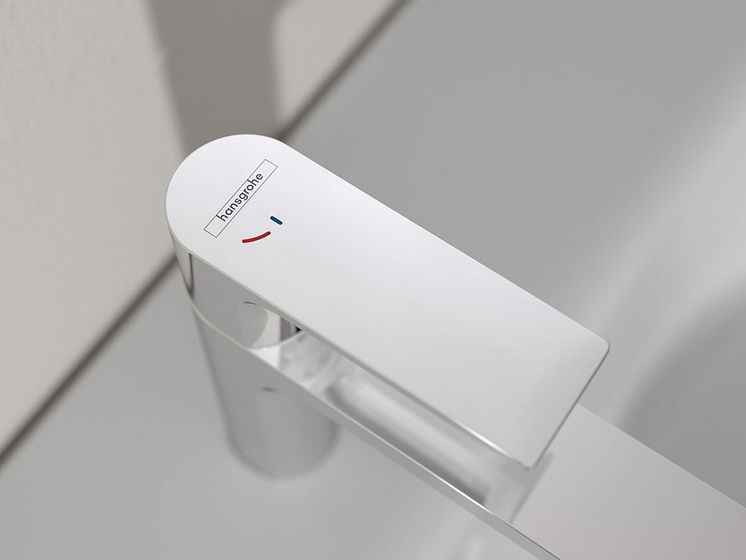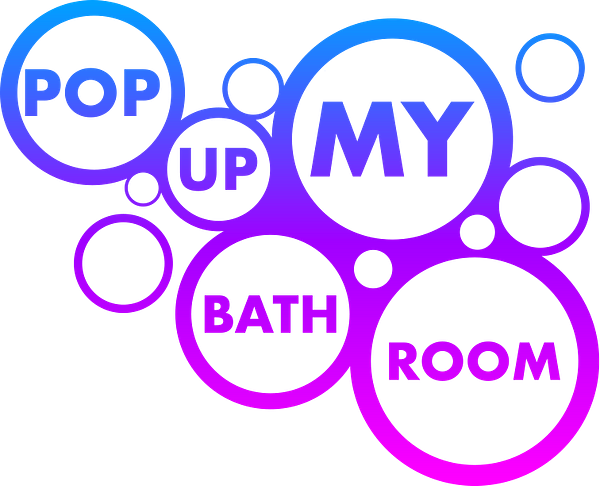Press release -
Sustainable Bathroom - ISH 2023 trend in The Bathroom Experience
Today natural materials, enduring design and certified sustainable production credentials are virtually standard for products from Germany’s bathroom sector. Private home owners are more and more mindful of ensuring a positive environmental footprint and increasingly demanding a “green” bathroom. The Sustainable Bathroom describes a development that will change an entire industry. In addition to resource conservation, energy management and sustainable product development, totally new concepts like the circular economy look set to play a key role as well. At ISH 2023, the Sustainable Bathroom will be present in the Water section in the form of products, panel discussions and targeted approaches, and will be defining new standards.
Sustainability is an important issue that has meanwhile arrived in the mainstream – not just as a matter of conscience, but as an expression of the current (politically correct) lifestyle. Our carbon footprint is becoming a prestige factor in the way we see ourselves, both as a society and as individuals. Consequently, resource conservation is the order of the day – including and especially in the bathroom, where one third of a household’s daily drinking water consumption is used for showering, bathing and personal care and hygiene. Another quarter ends up in the sewage plant as a result of flushing the toilet. But at least Germany is on the right track: according to the German Association of Energy and Water Industries (BDEW), average per capita water consumption has dropped from its peak of 147 litres in 1991 to 123 litres. At the same time, even in Germany – a country where there’s usually anything but a shortage of rain – the declining groundwater levels after several years of drought are making us realise that water is indeed a precious resource.

Photo: Hansgrohe
Conserving precious water in the bathroom
Being mindful of how we use water is the easiest way to behave sustainably in the bathroom. Because it’s not purely how much water we use that matters: heating it takes a lot of energy, and that has a noticeable impact on both the costs and the ecological footprint of every single household. First and foremost, making sure taps don’t run unnecessarily is an essential part of saving water, and perhaps showering rather than taking a bath. The German bathroom sector is constantly looking for ways to save water – whether it’s at the washbasin, in the shower or with the toilet.
Besides mindful behaviour, modern bathroom products are another way to reduce water consumption, without having to go to great effort or sacrifice comfort and convenience. Water-saving elements are now for instance a standard feature of most modern fittings, hand and overhead showers. Aerators – also known as flow restrictors – are the most familiar example. They’re inexpensive, easy to install and reduce the amount of water that passes through the tap by mixing it with air. Even much older taps can be retrofitted with a flow restrictor. Today’s side jets, waterfall and overhead showers also come with optimised, water-saving spray patterns. The popular overhead showers can even use an optimised spray pattern to simulate luxurious monsoon rain; as a result, not even those who regularly indulge in a hedonistic shower experience need to feel too guilty. Water-saving cartridges for conventional single-lever mixer taps also help to save water by causing resistance when the lever is operated and thus reducing the likelihood of the tap running at full flow unintentionally. In the public sector, and increasingly also in private settings, touchless fittings are being used to save water as well. It’s even possible to conserve resources when taking a bath, because tubs with an optimised inner shape considerably reduce the amount of water required to achieve the sought-after wellness effect.
Energy-saving features
Single-lever mixers for the washbasin and shower are a particularly effective way of saving water because they allow the flow to be turned on and off more quickly. What’s more, they have a built-in energy-saving effect because they allow the desired temperature to be set more quickly than separate hot and cold taps. And last but not least, touchless fittings are helping to promote a more conscious approach to water and energy in a growing number of private bathrooms: sensors control the water flow electronically and switch it on and off automatically; it’s often even possible to preset the temperature as well. Consequently, the water only flows when it’s really needed.
The thermostatic mixers available for the bathtub or shower allow the maximum and average water temperature to be set and maintain the temperature constantly thanks to a sensor. Besides preventing the risk of scalding, they also minimise the amount of time during which the water runs unnecessarily until it reaches the desired temperature.
The toilet as No. 1 water saver
As a rule, today’s cisterns are either equipped with a stop button that is pushed to halt the flow of water manually or with a short flush button. This dual flush technology saves up to 50% of the water used by conventional systems. Whereas pushing the large button results in 6 litres of water being flushed through the toilet, the small button only uses approx. 3 litres per flush.
At the same time, the technology advances manufacturers are making with regard to flushing the actual toilet bowl more effectively aren’t just further reducing water consumption in the bathroom, they’re making the toilet more hygienic and easier to clean as well. Rimless toilets in particular significantly reduce the amount of cleaning effort required because the absence of a rim means every part of the surface is easily accessible. That has the effect of minimising the use of environmentally harmful, sometimes very aggressive cleaning products.
The shower toilet is also a good choice for a Sustainable Bathroom and is particularly suitable for anybody who occasionally uses moist toilet paper in search of enhanced hygiene and comfort. Because that’s not just problematic for environmental reasons; it also increases the risk of clogging up the sewer system and wastewater treatment plants: it has to be raked out of the sewage and burned. In addition, moist toilet paper is made of synthetic fibres like polymers or polyester, which means it doesn’t dissolve in water and has a lasting impact on the environment. Besides eliminating the need for moist toilet paper, a shower toilet also reduces toilet paper consumption in general. What’s more, the water-based cleaning it provides is also far more gentle on the skin.
Recyclable materials and the avoidance of (plastic) waste
The Sustainable Bathroom isn’t just about saving precious resources, technically complex products and state-of-the-art technologies. There’s another way to achieve a Sustainable Bathroom: by using products that last for years and are made of natural or recyclable materials. Cosmetics, toiletries and hygiene products aren’t the only categories where it’s possible to avoid plastic waste; the sanitaryware and bathroom furniture used play an important role as well. At the same time, it has long been about far more than questions such as “wood or plastic?” and “ceramic or mineral cast?”, because the issue is a complex one. Aspects like transport, regionality and circularity also need to be taken into account. The use of recyclable materials is increasingly becoming a focal point of sustainable bathroom planning. Ceramic or steel enamel sanitaryware comes with the benefits of a long lifespan and 100% recyclability. Generally speaking, more attention is being paid to the use of mono-materials and easily separable components in the production of bathroom products nowadays because they make recycling easier and promote the development of a circular economy.
The use of natural materials like eco-friendly plaster, natural stone or wood plays a supporting role in sustainable bathroom design as well. It’s also worth paying attention to the materials used to make bathroom furniture, as well as whether their production was toxin-free or ideally even climate-neutral. Quality labels and ecolabels such as the Golden M, the Blue Angel, Furniture Made in Germany, FSC or PEFC are likewise helpful when it comes to finding eco-friendly and high-quality products.
Sustainable products and enduring design
Based on an average lifetime of 15 to 20 years for a bathroom, it seems sensible to make sure that spare parts and replacement components will be available for an unlimited period of time. And the fact that a single firm is often responsible for the planning, delivery and installation of an entire bathroom or individual modules guarantees availability or warranties. As a result, repairs and replacements can be implemented at minimum cost to users and the environment and the bathroom will stay looking attractive for years to come. At the end of the day, choosing bathroom products with the maximum possible lifetime is an important aspect of sustainability, underpinned by enduring design and top quality.
Ideally, the bathroom will be able to change and adapt to users’ needs as they enter different stages of their lives – provided this requirement is factored into the planning right from the start. Besides the technical prerequisites for electrical components, that also includes planning for the potential addition of safety handles and barrier-free accessibility, as well as making sure that the design of the basic equipment is aesthetically neutral. Metaphorically speaking, that means the sanitaryware needs to provide a blank canvas or neutral platform that allows users to stage their bathroom as they like. Then it’s easier to implement an up-to-date look and personal style preferences by using accessories or (partially) renovating the walls and floor.
An entire industry is ready to go green
It’s not possible to contemplate a Sustainable Bathroom in isolation from the skilled trades and planning involved: today’s sanitaryware is too interconnected with the technical system components behind the wall for that. As a result, sustainable bathroom planning will have an increasingly responsible role to play over the next few years. And Germany’s three-tier distribution system guarantees more than the availability of sustainable products as well, because sustainability is also playing an increasingly important role when it comes to logistics, packaging, the availability of spare parts and service. “For our sector too, sustainability will be a catalyst that affects all areas of the industry,” says Jens J. Wischmann, managing director of the German Bathroom Sector Association (Vereinigung Deutsche Sanitärwirtschaft e.V.) in Bonn. “Besides growing customer demand for sustainably designed bathrooms, we’re also observing that market players are optimising their process chains with an eye to sustainability. ISH 2023 will therefore be an important milestone on the way to the Sustainable Bathroom.”
Ultimately, the Sustainable Bathroom is a forward-looking concept that strives for the optimal combination of smart products for saving water and energy, eco-friendly industrial production, sustainable materials, future-oriented bathroom planning and enduring design.
Related links
Topics
- Architecture
Categories
- german bathrooms
- sustainable bathroom
- pop up my bathroom
- german bathroom sector association
- messe frankfurt
- ish 2023
Pop up my Bathroom, an initiative of the German Sanitary Industry Association (Vereinigung Deutsche Sanitärwirtschaft e.V. [VDS]) and Messe Frankfurt established in conjunction with the ISH, is an experimental platform for architects, bathroom planners, interior designers and journalists. It aims to explore and illustrate what possibilities the bathroom can offer people as an aesthetic and functional space. On the one hand, it gives experts a chance to find out about new developments, on the other hand it aims to convert the designs it develops into pictures that will be understood all over the world. The website www.pop-up-my-bathroom.com has therefore been expanded into a continuously updated blog that serves as a communication platform and has attracted almost 1 million international visitors. Until the next ISH opens its doors, it informs professionals and interested consumers not just about the Pop up my Bathroom trends but about the latest developments in various segments of the sanitary industry as well.
